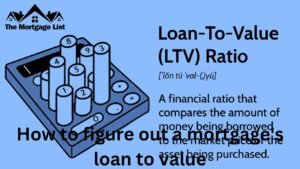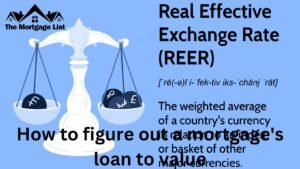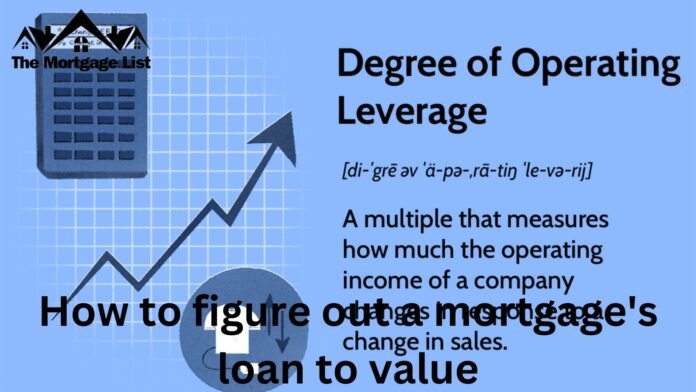How to Figure Out a Mortgage’s Loan-to-Value Ratio: Understanding the Basics
Introduction
In the realm of real estate financing, understanding the mortgage loan-to-value (LTV) ratio is crucial. Whether you’re a first-time homebuyer or a seasoned investor, grasping this concept can significantly impact your financial decisions. This article aims to delve into the intricacies of the mortgage LTV ratio, providing a comprehensive guide for anyone navigating the world of mortgages.
What is Loan-to-Value Ratio?
Defining LTV Ratio
The loan-to-value ratio is a critical financial metric used by lenders to assess the risk of a mortgage loan. It represents the ratio of the loan amount to the appraised value or purchase price of the property, expressed as a percentage.
Importance of LTV Ratio
Understanding the LTV ratio is essential because it determines several factors, including loan eligibility, interest rates, and mortgage insurance requirements.

Calculating Loan-to-Value Ratio
Formula for Calculation
Divide the loan amount by the property’s appraised worth to find the loan-to-value ratio (LTV ratio). To obtain the percentage, multiply the outcome by 100.
Example Calculation
For instance, if you’re purchasing a home valued at $250,000 and taking out a mortgage loan of $200,000, the LTV ratio would be calculated as follows: LTV ($200,000 / $250,000) x 100 = 80% is the ratio.
Significance of Loan-to-Value Ratio
Risk Assessment
Lenders use the LTV ratio to evaluate the risk associated with a mortgage loan. A higher LTV ratio indicates greater risk for the lender, as the borrower has less equity in the property.
Impact on Interest Rates
Generally, borrowers with lower LTV ratios qualify for lower interest rates since they pose less risk to lenders. Conversely, higher LTV ratios may result in higher interest rates or the requirement of private mortgage insurance (PMI).
Factors Affecting Loan-to-Value Ratio
Property Value
The appraised value or purchase price of the property directly influences the LTV ratio. Higher property values result in lower LTV ratios.
Down Payment
The LTV ratio is inversely impacted by the size of the down payment. A higher down payment decreases the LTV ratio and the loan amount.

Loan Amount
The total amount of the mortgage loan impacts the LTV ratio. Higher loan amounts relative to the property value result in higher LTV ratios.
Importance of a Favorable Loan-to-Value Ratio
Access to Financing
A favorable LTV ratio enhances the borrower’s chances of securing financing at competitive rates and terms.
Equity Building
Maintaining a low LTV ratio enables borrowers to build equity in their properties more rapidly, providing financial security and flexibility.
Conclusion
Understanding the mortgage loan-to-value ratio is crucial for anyone involved in real estate transactions. By comprehending how LTV ratios are calculated and their significance, borrowers can make informed decisions to achieve their financial goals.

FAQs (Frequently Asked Questions)
1. Why is the loan-to-value ratio important?
The LTV ratio is important because it helps lenders assess the risk associated with a mortgage loan and determines various aspects of the loan, such as interest rates and insurance requirements.
2. How does the down payment affect the LTV ratio?
A larger down payment reduces the loan amount, resulting in a lower LTV ratio, which can lead to more favorable loan terms and lower interest rates.
3. Can the LTV ratio change over time?
Yes, the LTV ratio can change over time as property values fluctuate and borrowers make payments towards their mortgage, thereby reducing the loan balance.
4. Is private mortgage insurance (PMI) always required for high LTV ratios?
PMI is typically required for LTV ratios above 80%, but it ultimately depends on the lender’s policies and the type of mortgage loan.
5. How can I improve my LTV ratio?
To improve your LTV ratio, you can make a larger down payment, pay down your mortgage balance, or increase the value of your property through renovations or appreciation.
Read More:>

